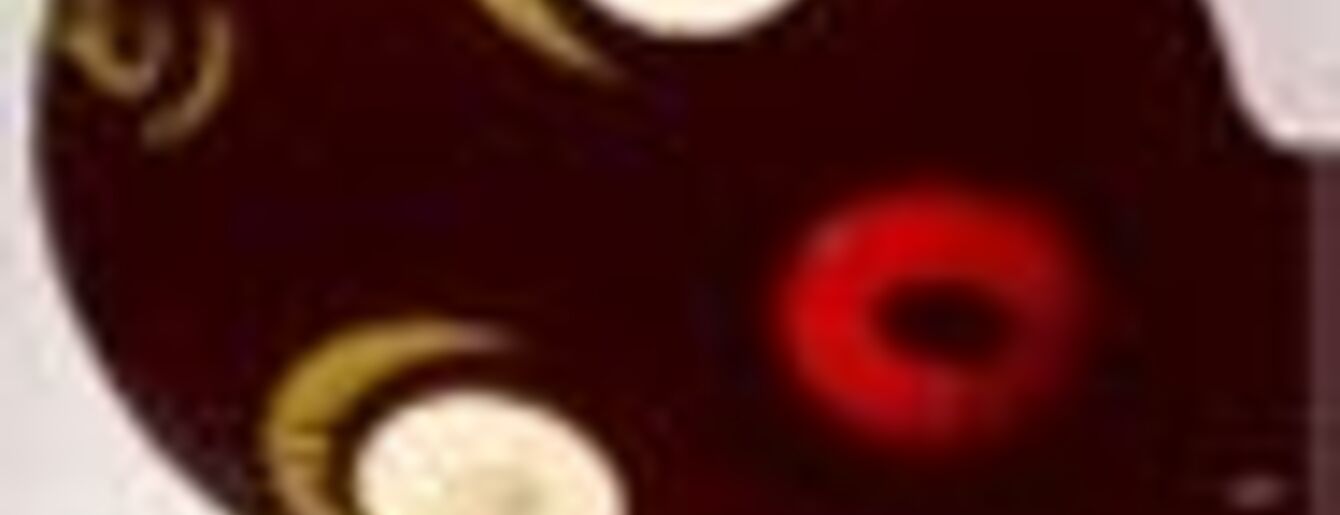
We 23.2.2000 - Fr 24.3.2000
kex—kunsthalle exnergasse
B
DARK MATTERS
The Dark Matters is the first one-person exhibition by the British based south Asian artist Shaheen Merali in Vienna. Merali was born in East Africa to Indian parents and for the last thirty years has been living and working in London. Since his arrival as a young boy in England, the artist and his community had faced the brunt of British racism as new immigrants. Merali works with this personal and communal history in addressing issues around race, culture and identity. Merali trained at the Gwent College of Further Education, graduating in 1981 as a sculptor, his practice remaining indebted to the effects of resembling a sense of self within a British context. In Dark Matters, Merali is represented by a series of work that both draws upon his practice from the eighties and creates new work specifically for Vienna.
The work in Dark Matters addresses a manifold of issues in that it brings together a multiplicity of languages from different discourses namely that of the historical, the political, the kitsch and a play on the absence of knowledge about the effect of the everyday object. The absent and the unacknowledged, the silence and the deathly, remain 'unexplored' territories.. . specifically in the European psyche about the colonised 'other'. The work in Dark Matters reflects both on the construction of visual images, their context and the historical place of post colonial discourses around identity and their contemporary situation in contemporary Europe.
The earliest work in the exhibition is Going Native(1989), though relating specifically to Goa, a popular holiday destination in India and an ex- Portuguese colony, Going Native applies to a much broader context in its construction of the leisure activities of holidays, tourism, cinema and consumption. It is a metaphorical occupation of 'unexplored' territories..The title, Going Native, draws together the numerous readings within the installation as well as alluding to Goa's own history. From the Portuguese policy of concubinage and intermarriage with Goans, to the present 'hippie trail' which culminates on Goa's beaches. 'going native'- whether as acquisition or escape- has always fallen within a wider appropriation of colonised cultures and territories. The installation involves twenty to thirty white deck chairs facing a large video projection of Franciscan monks walking from right to left on a Goan beach. The seductive blue of the sea and the mesmerising soundtrack hide the fact that a series of slides of tourists and nirvana seekers in India are projected onto the seated audiences on the deck chairs.
The second installation, digNative (1999) comprises a series of showcases; the showcases, like a dolls house, present a space within a space, a within which is within a within. They further create a tableau of a materialised secret. The interior of the showcase houses the impoverished and partial souvenirs constructed within the master discourse, a narrative memoir which oscillates the play of desire and disgust. The series of racialised objets d'art (negrophile) are presented within the model of a contemporary museum/ installation praxis. The utilisation of storage material such as polystyrene and masking tape adds a semiotic twist and veracity to their employment in current art practice, as well as to their use in storage and transportation by institutions and individual practitioners. This simulacrum chamber of parodied history provides a transparent location where once these objects played a significant role in the everyday. These objets d'art act as a demonstrative signifier of race and its absolute necessity in the kitsch and popular culture of Europe.
The third installation takes the form of a workshop-BUY Native- a work in progress, where progress is about accumulation and appropriation. The work is disguised, hidden and unfinished. The audience is made to believe that it is an actual work space, where ideas are still under construction, to be comprehended at a later stage. Merali brings together a series of past fabric works from 1981-87, made in the traditional format of cotton and silk batiks, within this workshop setting. These finished older works surrounded by the tools of a craft based media creates confusion around how we judge and what criteria are used in the art world. The installation attempts to question our approaches to aesthetics, to pose problems by arguing that there are no properties inherent to an object which serve to determine it as art. Only the reductive European institutional framework accords status and removes status.
The final work, Scenes from the Nativity, were originally commissioned by Nation Records and Beggars Banquet for Fundamentals last album, Erotic Terrorism; these digitally manipulated images alas were rejected for their blatant use of violence juxtapositioned with the kitsch.. These images partly grabbed from internet sites dedicated to violence including rotten.com, are indulgent trashy reconsiderations of the position of the individual black subject. A testimonial of imagined subjects to create powerful sulbartern voices. Shaheen Merali is currently a lecturer at Central St. Martins School of Art and the University of Westminster. He is also the co-founder of Panchayat Arts Education Resource Unit, an issue based archive currently held at the University of Westminster. He is currently exhibiting in a group exhibition, The Crown Jewels, NGBK, Berlin. Recent exhibitions include zerozerozero, Whitechapel Art Gallery, London; machos y munecas, Barcelona and two survey shows in New York, 'Out of India', Queens Museum and 'Transforming The Crown ', Bronx Museum. His video work 'Paradigm Lost' commissioned by the Scottish Arts Council has extensively toured Internationally and is currently included in the anthology reel 'Alien/Nation' compiled by Sixpack films, Austria.
